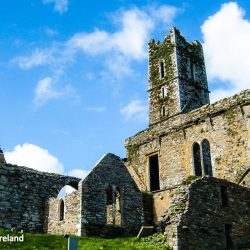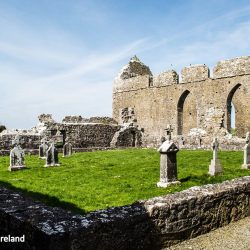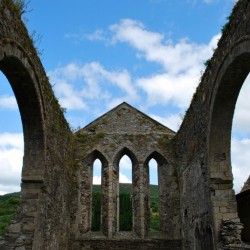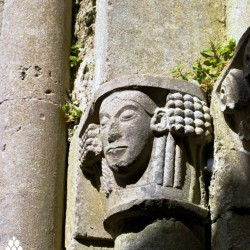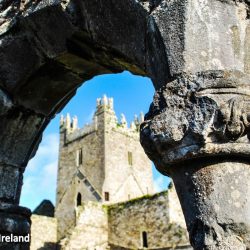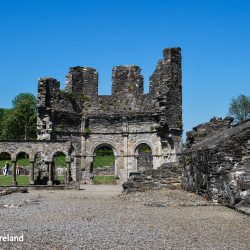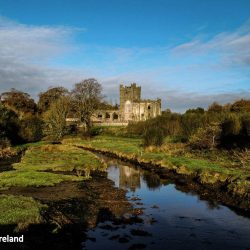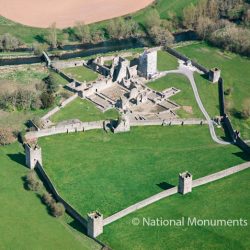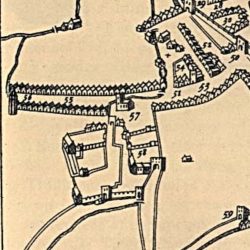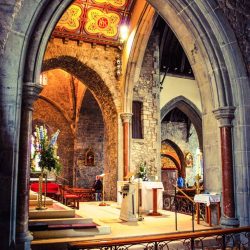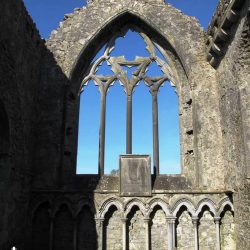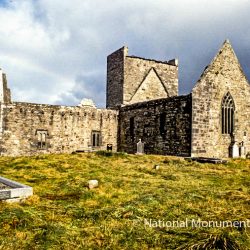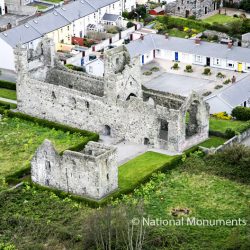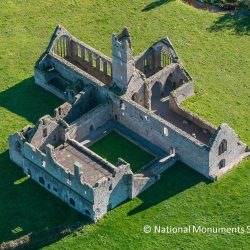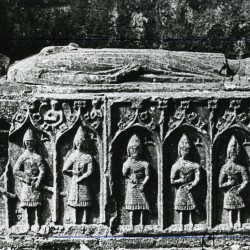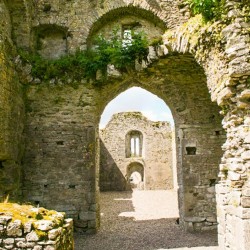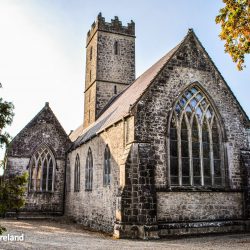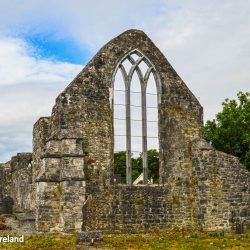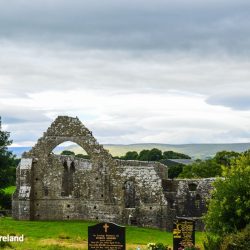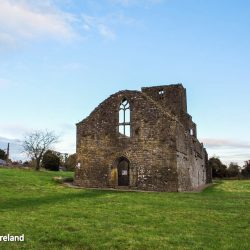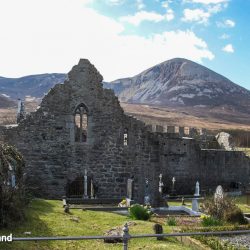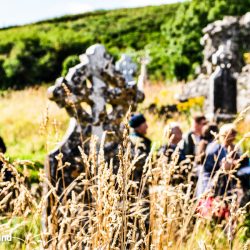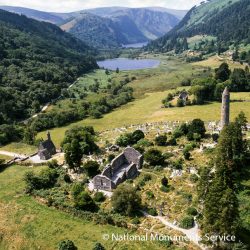FRANCISCAN ORDER (Friars Minor, Grey Friars, First Order of St Francis). Franciscan friars followed a Rule established by St Francis of Assisi (d.1226) that sought to emulate the life of Christ through renouncing property and travelling the world to preach. Together with the Dominican order were co-opted by the papacy to push through the programme of pastoral reform promulgated by the Fourth Lateran Council (1215).They were active in community life, and relied on the donation of alms for their day to day subsistence.
The order was established in Ireland c.1230 and expanded steadily, with thirty-two Franciscan houses in place by 1325. These were located mainly in the towns and boroughs of the Anglo-Norman colony and populated with Anglo-Norman friars. In common with the Dominican and Augustinian friars, a second phase of foundations from c. 1371 brought the Franciscans to slightly more remote locations, predominantly in the south and the west of the country, often established close to the residence of the local lord. Observant reform (a stricter adherence to the Rule of St Francis) was fully established by 1460 and had been adopted by at least thirty-eight of the sixty-one houses by 1540.
There is just one, ambiguous, medieval reference to an Irish house of Franciscan nuns (known as the Second Order or Poor Clares). Tertiaries, or lay members of the order, adopted the penitential life and wore the habit. Some, the Third Order Secular, lived in the community and were closely allied to First Order friaries. Members of the Third Order Regular lived communally and worshipped in their own churches. Forty-eight houses of the Third Order Regular of St Francis were established during the fifteenth and sixteenth centuries, mainly in Connacht and Ulster. The number of Third Order houses was unusually high in Ireland (there were none in England and only two in Scotland). This may be because they played a pastoral and educational role in areas of relatively scattered population – functions fulfilled by parish and collegiate institutions elsewhere.
Further Reading:
C. Mooney, ‘Franciscan Architecture in pre-Reformation Ireland’, JRSAI, 85 (1955), 133–73; 86 (1956), 125–69; 87 (1957), 1–38, 103–24;
C. Ó Clabaigh, The Franciscans in Ireland 1400-1534 (2002);
Ó Clabaigh, ‘The Other Christ: Images of St Francis in Late Medieval Ireland’ in R. Moss, C. Ó Clabaigh and S. Ryan (eds), Art and Devotion in Late Medieval Ireland (Dublin, 2006), pp. 142–62;
Ó Clabaigh, The Friars in Ireland 1224–1540 (Dublin, 2012);
A. O’Donoghue, ‘Mendicant Cloisters in Munster’ in R. Stalley (ed.), Limerick and South-West Ireland: Medieval Art and Architecture (Leeds, 2011), pp 111–31;
M. O’Neill, ‘Irish Franciscan Friary Architecture: Late Medieval and Early Modern’ in E. Bhreathnach, J. MacMahon and J. McCafferty (eds), The Irish Franciscans 1534–1990 (Dublin, 2009), pp 305–27;
R Ó Floinn, ‘Irish Franciscan Church Furnishings in the pre-Reformation Period’ in R. Ó Floinn (ed), Franciscan Faith: Sacred Art in Ireland, AD 1600–1750 (Bray, 2011), pp 7–20.
Adare, Limerick
The Franciscan friary of Adare lies in the demesne of Adare Manor, recently converted into a resort and golf course, on the east bank of the river Maigue, Co. Limerick. It was founded in 1464 and while now in ruins, is in fact one of the most structurally complete Franciscan foundations in Ireland.
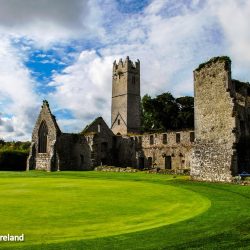
Ardfert, Kerry
A Franciscan friary is located in the town of Ardfert, about 8km north-west of Tralee, Co. Kerry. It was founded for the Franciscans c.1253 by Thomas Fitzmaurice Fitzraymond, 1st Lord of Kerry. The buildings are in relatively good condition today, despite long periods of occupation and neglect. This is largely due to the continued patronage and protection of the friary by the descendants of the Fitzmaurice lords of Kerry.
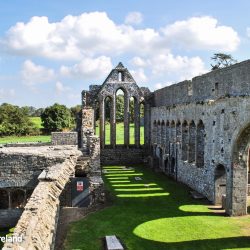
Askeaton, Limerick
The Franciscan friary of Askeaton lies by the river Deel, to the north of the village of Askeaton, Co. Limerick and the impressive castle of the Earls of Desmond, which stands on a rocky island in the centre of the town.
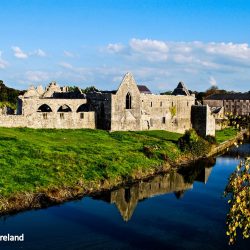
Buttevant, Cork
The Franciscan friary of Buttevant is located in the small market town of the same name on the banks of the River Awbeg, Co. Cork. It was founded by the de Barry family in 1251, most likely David I (d.1261), lord of Buttevant. It is also possible, but unlikely, that it was founded during the reign of Edward I (1272-1307) by David I’s son, David de Barry II (d. 1278). The latter was buried in the choir of the church in 1279, around the time a slender tower was inserted between the nave and chancel. The church and its south transept survive, as well as a crypt underneath the choir. The friary became the burial place of de Barrys, and Buttevant remained the principal residence of the senior branch of the family throughout the Middle Ages.
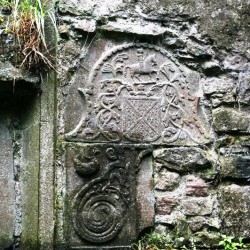
Castledermot, Kildare
The Franciscan friary of Castledermot in south Kildare was founded sometime before 1247, when it received a royal grant of 15 marks from John Fitzgeoffrey (d.1258), Justiciar of Ireland. It is believed that the founder was Walter de Riddlesford II (d.1238/9), lord of the town of Thrisledermot, as the town was then known. His father, Walter I (d.1226), probably founded the priory and hospital of St John the Baptist for the Fratres Cruciferi in Castledermot prior to 1216. His daughter Emeline or Aveline married Stephen Longespée (1216-60), Justiciar of Ireland and cousin of Henry III, in c. 1243. It is possible that they were involved in the foundation of the friary. In the early fourteenth century, a side-aisle and transept were added to the thirteenth century nave and choir, possibly as early as 1302. The foundation suffered during the Bruce invasion of Ireland (1315-18) and was dissolved in 1540.
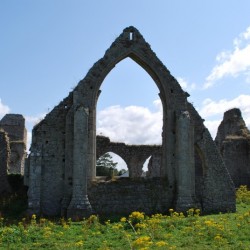
Claregalway, Galway
Claregalway was one of the first Franciscan houses founded in Connacht. It was strategically located close to Claregalway castle and the banks of the river Clare, guarding a natural route way between the port of Galway and eastern and northern Galway. It was built in phases over a long period of time, which is evident in the surviving fabric of the building. The friars initially enjoyed the protection of Sir Richard Burke (d.1582), the second earl of Clanricard. In 1570, the friary was granted to Burke but they were expelled after his death and the friary was used as a barracks by the forces of the Governor of Connacht. The friars sporadically used the friary down to the nineteenth century.
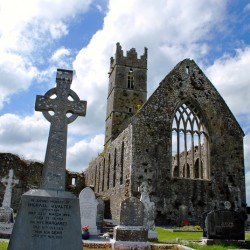
Donegal, Donegal
The ruins of the Franciscan friary are located on the outskirts of Donegal town, where the River Eske joins Donegal Bay. Situated just a short distance from the O’Donnell castle, the friary was founded as a Franciscan Observant house in 1474 by Red Hugh O’Donnell, chief of Tír Conaill and his mother Nuala O’Conor.
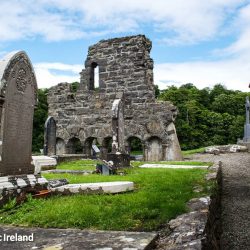
Ennis, Clare
Ennis Franciscan friary was built on an island at a point where the river Fergus divides. The original O’Brien founder of the friary is unknown – it may have been Donnchadh O’Brien, king of Thomond (d. 1242) but no records survive.
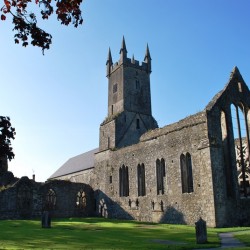
Kilconnell, Galway
The Franciscan friary of Kilconnell lies within the territory of the O’Kellys, lords of Uí Mhaine in Eastern Connacht. It was situated close to the primary Athlone to Galway road, fifty kilometres east of Galway city on a site of an earlier church dedicated to St. Conall. The friary, with its tall slender tower dominates the relatively flat landscape around it. The friary had a unstable history during the turbulent sixteenth and seventeenth centuries and enjoyed the patronage and protection of powerful families from the fourteenth to the eighteenth centuries, both those traditionally associated with the local area and those who were forcibly moved west during the seventeenth century. The medieval friary survives in good condition, with the tombs of its many of its patrons surviving inside its ruins.
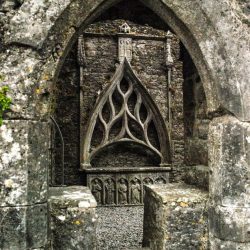
Kilcrea, Cork
Kilcrea friary is located in the civil parish of Desertmore, near Ovens, Co. Cork, in an apparently isolated area south of the river Bride. The friary was an early Observant foundation established by Cormac Láidir MacCarthy, lord of Muskerry, in 1465.
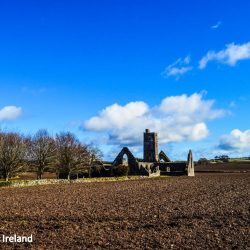
Kildare, Kildare
The Remains of Kildare Franciscan friary stand to the south of the town, between Grey Abbey Road and the Kildare Village outlet shopping centre. The entire length of the friary church survives, and the remains have recently been the object of extensive preservation and conservation work.
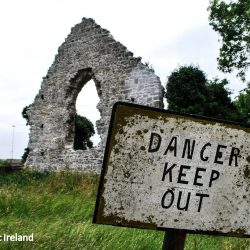
Moyne, Mayo
Moyne Franciscan friary is located to the south of Killala bay in Co. Mayo, two miles to the southeast of the village of Killala. Founded by the MacWilliam Burkes, lords of Lower Connacht in 1455, It is among the most extensive and impressive remains of Franciscan friaries in Ireland.
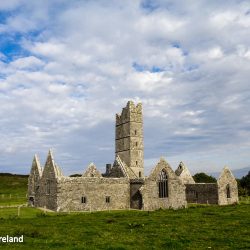
Muckross, Kerry
Muckross friary is located in the very picturesque landscapes of Killarney National Park, just a few kilometres south of the town, on the shores of Lough Leane. It was established under the patronage of Donal ‘an Diamh’ MacCarthy (b. 1373) around 1440, although it might be re-foundation.
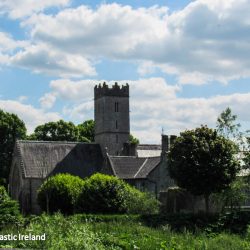
Ross Errilly, Galway
The Franciscan friary of Ross Errilly lies on the banks of the Black River, a natural border which divides the modern counties of Galway and Mayo before it enters Lough Corrib. One of the most impressive surviving Franciscan friaries in Ireland, Ross Errilly is located 2km North West of the Galway village of Headford. It was founded at some point between the mid-fourteenth and late fifteenth centuries. Historians have argued over dates of the friary’s foundation ranging from 1348 to 1498, with the early seventeenth century Franciscan historian Donatus Mooney noting that the date of the friary’s foundation was unknown. The earliest contemporary reference to the friary was when John Blake, a Galway citizen, bequeathed forty pence to the friary of Ross (Ross Errilly) in 1469.
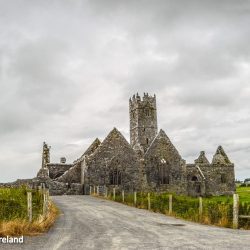
Quin, Clare
Quin Franciscan friary is located on a large tract of open land near the modern Roman Catholic church in the village of Quin, Co. Clare. The friary was founded around 1402 by Síoda Cam MacNamara and became an Observant Reformed house in 1433. While many friaries were founded on the site of earlier religious houses and monasteries, Quin friary occupies the site of the Anglo-Norman de Clare fortress that was built after 1278, and destroyed in 1318. The remains of the castle are still visible as they were incorporated into the friary, with the foundations of three of the corner towers of the curtain wall surviving to varying degrees. Despite its suppression and suffering repeated attack in the sixteenth century, substantial remains of the friary survive, making it one of the most intact medieval Franciscan friaries in Ireland.
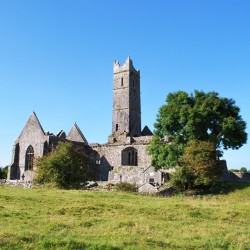
Timoleague, Cork
Timoleague Franciscan friary is located in a village on the bank of the River Argideen overlooking Courtmacsherry Bay. It was built on the site of an earlier church dedicated to St Molaga whose feast was celebrated here until the seventeenth century. The foundation of the friary has been attributed to Domhnall Got MacCarthy (d. 1252) in 1240 and also to William de Barry (d. 1373), with his wife Margery de Courcy, in the early fourteenth century.
